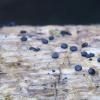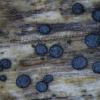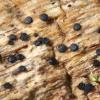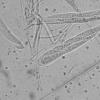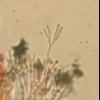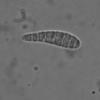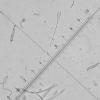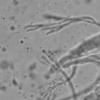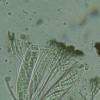
12-12-2025 18:39
Mirek GrycHello everyone.Macrofeatures similar to Mollisia b

09-12-2025 12:06
 Andgelo Mombert
Andgelo Mombert
Bonjour,Je recherche l'article concernant Hypobryo

07-12-2025 16:07
Arnold BüschlenHallo, ich habe in einer Moos-Aufsammlung (epiphy

08-12-2025 21:04
Mark Stevens"Hello everyone,I'm relatively new to microscopy (

08-12-2025 18:59
 Lothar Krieglsteiner
Lothar Krieglsteiner
.. found by a seminar-participant, I do not know t

08-12-2025 17:37
 Lothar Krieglsteiner
Lothar Krieglsteiner
20.6.25, on branch of Abies infected and thickened
 I found these tiny, flattened, sessile fruiting bodies 0.2-0.4 mm wide om bark of a decidous branch (Ficus carica if I remember well).
I found these tiny, flattened, sessile fruiting bodies 0.2-0.4 mm wide om bark of a decidous branch (Ficus carica if I remember well). - Paraphyes with black pigments, tips not particularly swollen, x2 -x4 branched, very beautiful.
- Asci 8-spored, J-ve, spores imbricated and tightly packed, 80-150 x 17-22 um wide (looking quite stout)
Spores 25-40um long, 6-10 septate, unsymetrically fusiform / irregular



https://fungi.myspecies.info/all-fungi/patellaria-atrata
Thank you.

There we go ;-)
So those branched structures are called Interascal tissue (not paraphysis) ...
Thanks and I should have taken better pics, they are somewhat not in focus :-(
Martin is surely right, but the apothecia are unusual small for P. atrata. If you still got some fresh material, please show us some mic´s taken in tab water.
Cheers,
Guy

tnx :-)
In the last 6 years I had 5 collections from Patellaria atrata on Ficus carica (from southern France) with apothecia from 0.5 to 1.2mm in diameter.
P. atrata grows quite well in culture (on CMA 1:1).
Regards,
Guy

Hello,
While going to dissect fresh specimens, I realized that in the previous measurments I must have used the wrong scale of measurement, and the actual measurments are within the range of P. atrata, although on the lower range. The largest one was 0.68 mm along the widest axis.
0.4 - 0.6 (0.7) × (0.3) 0.4 - 0.5 (0.6) µm
Q = (1) 1.1 - 1.3 (1.4) ; N = 15
V = 0 µm3
Me = 0.5 × 0.4 µm ; Qe = 1.2 ; Ve = 0 µm3
I read that apothecia are 0.3-1 mm diam so I t hink we are good.





Thank for yr help once again
